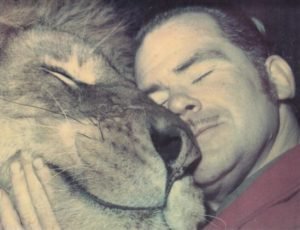By Charles Towne
He was warm and for the moment that was all that was important. Lying in the grass as he was he was well hidden though there were not many that would dare to intrude upon his solitude.
In his six years of life he had rarely been threatened by another predator. There was that time when he was about a year old and eighteen inches in length that the red shouldered hawk had thought to dine on him. The only thing that saved him that day was the fact that the grass was deep, thus impeding the hungry hawk's plunging attack.
Everything in his life was governed by instinct. When he was hungry he went in search of food. This food questing was always a result of instinct as were those times that he had met and mated with another of his kind. When forest fire threatened it was instinct that drove him down a nearby gopher tortoise burrow and when the chill of winter embraced the land he sought the warmth of that same burrow, driven by that same primitive life force, instinct.
Now four and a half feet long and heavy bodied he had few if any natural enemies and in another day, or two at the most and he would be able to see again.
The most vulnerable time in a snake's life is when it is preparing to cast off its old skin. During this shedding time the snake loses its usual glossy sheen and becomes pale and dull but its vulnerability comes from being almost blind at the time of shedding.
All snakes shed periodically and as the old skin becomes loose the entire outer layer, including the old eye coverings or lenses, separate and at this time they become opaque, rendering the snake almost blind until that time when he sheds and his eyesight is restored once again. As in the case of our friend he may shed as many as six, even seven times in the course of a year, all dependent upon the abundance of food for as he eats he grows and as he grows he has to shed for his skin does not grow with him.
Each time that he sheds he adds a new segment to his rattles thus it is impossible to tell a rattlesnake's age by the number of sections in his rattle.
As he lays there he senses a nearby movement. His black forked tongue extrudes out and again, by instinct, is instantly withdrawn. Faster than thought, faster than a snakes strike, the forked tip is inserted into the twin orifices of the Jacobsen's organ in the roof of his mouth. From this unconscious act he is informed by a combination of taste and smell that whatever is drawing near is warm blooded and much too large for him to eat. Whatever the animal is it foolishly draws near.
He prepares to defend himself. He attempts to warn the intruder but for some reason it does not heed this warning.
Though almost blind he can still see movement as a dull blur and again, by deadly unerring instinct, mouth agape, he strikes.
I had no clue that the diamondback rattlesnake was there until he hit me.
The shock of the strike was almost like being struck with a fist and then almost instantly there was that telltale burning sensation indicating deep envenomation and a bad bite.
Not that there is ever such a thing as a good bite from a poisonous snake.
A large diamondback rattlesnake such as the one that struck me would have fangs three quarters of an inch in length and he could dump a pretty good dose of venom in your system so I knew that I was in trouble the moment I was struck.
Why had I not heard his rattle? Rarely do rattlers fail to warn an intruder but I had heard nothing, why?
There he was, coiled in that typical defensive position, ready for another strike. It was then that I understood why I had failed to hear him. The end of his tail was up and shaking with great vigor but it wasn't making a sound? This diamondback rattlesnake was completely devoid of his rattles.
No early warning system!
Obviously, as sometimes happens, his rattles had become dry and brittle and had broken away, leaving him as I found him - less his rattles.
The diamondback was where he belonged, in the deep woods. I was the intruder.
The cause for my being bitten was some hiker had thoughtlessly thrown away a piece of trash and as I bent to pick it up my hand was placed within the snakes striking range. I walked away and ended up in the hospital which is another story. Hopefully Mr. Diamondback is still there but with a new set of rattles.
 Charles Towne is first and foremost a Christian. An octogenarian, author, journalist, wildlife photographer, naturalist, caregiver, and survivor, his life has been and continues to be, a never-ending adventure filled with possibilities never imagined. He has adopted the philosophy that to Live fully, laugh uproariously, love passionately, and learn like there is no tomorrow, is a formula for a long and joy-filled life.
Charles Towne is first and foremost a Christian. An octogenarian, author, journalist, wildlife photographer, naturalist, caregiver, and survivor, his life has been and continues to be, a never-ending adventure filled with possibilities never imagined. He has adopted the philosophy that to Live fully, laugh uproariously, love passionately, and learn like there is no tomorrow, is a formula for a long and joy-filled life.
Comments
No comments on this item Please log in to comment by clicking here